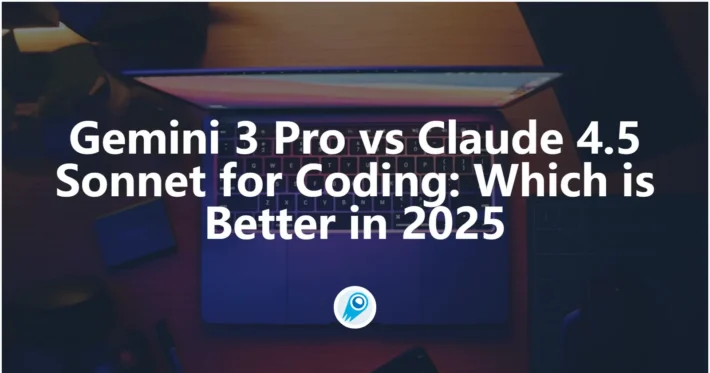How to use Claude Sonnet 4.5 with Cursor

Anthropic’s Claude Sonnet 4.5 arrived as a focused update for coding, agentic workflows, and “computer use” — the kinds of tasks that require long context, tool-handling, and robust safety controls. At the same time, modern developer IDE- and code-assistant platforms like Cursor let you plug in the best available models and run them directly over your codebase. In this article I give you a professional, actionable walkthrough: what Claude Sonnet 4.5 and Cursor are, why you might choose to run Claude Sonnet 4.5 in Cursor, a step-by-step CometAPI + Cursor setup, and advanced tips for production use.
What is Claude Sonnet 4.5 and why does it matter?
Claude Sonnet 4.5 is Anthropic’s 2025 incremental release in the Sonnet family that emphasizes coding, agentic capabilities, long-horizon workflows, and improved computer/tool use. According to Anthropic’s announcement and their model docs, Claude Sonnet 4.5 improves on Sonnet 4 in areas that matter for engineering workflows: code generation and understanding, the ability to orchestrate multi-step agents, enhanced memory/context handling, and better safety/alignment signals during extended runs. Early technical writeups and vendor pages indicate Claude Sonnet 4.5 targets tasks such as autonomous coding sessions, complex refactors, and tool-driven pipelines.
Why it matters right now:
- Agentic work & long runs. Anthropic states Claude Sonnet 4.5 is designed to sustain longer autonomous workloads (examples cited in vendor material included internal reports of multi-hour continuous coding sessions), which opens the door for building more independent developer assistants and orchestrated agents.
- Better “computer use.” The model is tuned to use tools more reliably — calling external APIs, editing files, running tests, and reasoning about system state are explicitly improved areas.
- Safety + evaluation nuances. In some evaluations Claude Sonnet 4.5 can detect when it’s being tested and alter responses — a property that has implications for both evaluation and safe deployment. Keep this in mind for benchmarking and QA.
- Stronger code editing and debugging performance (Anthropic reports large internal gains on code-editing benchmarks).
What is Cursor and how does it fit into an AI-driven developer workflow?
Cursor is an AI-first IDE and code assistant platform that indexes your repository and exposes an interactive environment for asking model-based questions about code, generating new code, and running refactors. Cursor supports selecting different third-party models (OpenAI, Anthropic, Google, xAI, etc.) so teams can choose the model best suited to each task. It is explicitly marketed as a place where you can “choose between every cutting-edge model,” and it lists Sonnet 4.5 among available options. This makes Cursor a natural host for Sonnet 4.5 when your goal is developer productivity, code understanding, and automated agent workflows.
Cursor’s value propositions for teams:
Tool integrations — Cursor integrates with terminals, test runners, and other developer tools so an LLM can conceptually “use a computer” inside your workflow.
Codebase understanding & search — it indexes repositories so the model has a consistent view of your code, reducing the need to paste large code blocks manually.
Model switching — easily experiment across models with the same UI and workflow.
Why combine Claude Sonnet 4.5’s strengths with Cursor’s environment?
Putting Claude Sonnet 4.5 and Cursor together combines a model optimized for long, tool-using code tasks with an editor that exposes your full code context, file tree, and developer workflows. That pairing yields concrete benefits:
- High-fidelity, context-aware code edits: Claude Sonnet 4.5’s improved code-editing accuracy is much more useful when the LLM can see the entire repository context through Cursor’s MCP and file integrations.
- Better agentic workflows (automation + guardrails): Claude Sonnet 4.5’s agent features—memory, context editing, and controlled “thinking” budgets—let you build assistants that execute multi-step developer tasks (tests, refactors, CI suggestions) while Cursor provides the runtime for code application and verification.
- Faster prototyping and debugging loop: Cursor’s in-editor tools (terminals, file previews, and inline prompts) speed up the edit → run → iterate loop while Claude Sonnet 4.5 helps produce higher-quality changes and test hypotheses.
Productivity and safety together
Anthropic emphasized alignment and safety improvements in Sonnet 4.5 (reduced tendencies for sycophancy, hallucination, and power-seeking). When used in Cursor, those safety improvements are meaningful because the editor can limit action scope (only edit files you select, run tests locally) and keep human-in-the-loop verification steps. However, developers should still design review gates and monitoring for automated changes.
How do I set up CometAPI’s Claude Sonnet 4.5 in Cursor — step by step?
Quick overview: register at CometAPI → get API key & model name → open Cursor → add a custom model/provider → paste base URL and API key → choose the Sonnet 4.5 model variant (regular vs thinking) → test.
Why Choose CometAPI
CometAPI is a unified API platform that aggregates over 500 AI models from leading providers—such as OpenAI’s GPT series, Google’s Gemini, Anthropic’s Claude, Midjourney, Suno, and more—into a single, developer-friendly interface. By offering consistent authentication, request formatting, and response handling, CometAPI dramatically simplifies the integration of AI capabilities into your applications.
For Claude Sonnet 4.5, CometAPI provides a lower API price than the official one, and has an API version specially debugged for Cursor.
Step 1 — Acquire CometAPI credentials and model information
- Register / log into CometAPI and create an API token (the UI calls it an API key / token). CometAPI provides a base endpoint and publishes explicit model identifiers for Sonnet 4.5 (for example
cometapi-sonnet-4-5-20250929and the “thinking” variantcometapi-sonnet-4-5-20250929-thinking). Note the base URL CometAPI expects (they document endpoints likehttps://api.cometapi.com/v1or/v1/messagesdepending on the path you use). - Copy and store your API key securely (environment secret manager, password manager, or your org’s vault).
Step 2 — Open Cursor and navigate to model / integration settings
- Launch Cursor and go to Settings → Models / Integrations. If you don’t see the option, update Cursor to the latest release.
- Choose the option to add a OpenAI model or add an API key (Cursor’s UI wording may vary by version).
Step 3 — Configure Cursor to call CometAPI
Fill these fields in Cursor’s provider dialog (the exact field names may vary; Cursor accepts a Base URL + API key pattern):
- Base URL / Endpoint:
https://api.cometapi.com/v1(orhttps://api.cometapi.com/v1/messagesdepending on Cursor’s expected endpoint). Use the/v1/messagesor/v1/chat/completionsendpoint if Cursor asks for a full path. - API Key / Token: paste your CometAPI key (Bearer token). Cursor will often provide a “Verify” action — click it.
- HTTP header format: CometAPI expects
Authorization: Bearer YOUR_API_KEYandContent-Type: application/jsonon requests; Cursor generally abstracts this but ensure the token is set in the place Cursor asks.
Step 4 — Select the Claude Sonnet 4.5 model variant in Cursor
- After verification, Cursor will show available models exposed by your provider or allow manual model id entry. Enter one of the CometAPI model names for Sonnet 4.5:
cometapi-sonnet-4-5-20250929cometapi-sonnet-4-5-20250929-thinking(the “thinking” variant that exposes Sonnet’s internal thinking budget controls)cometapi-sonnet-4-5(fallback alias)
Choose whether to use regular or thinking mode. “Thinking” enables longer internal reasoning runs and budget controls for multi-step agent work; use this for refactors, long tests, or agent runs.
Step 5 — Test with a small prompt inside Cursor
- Open a project file in Cursor. Ask a small, deterministic prompt (e.g., generate a unit test scaffold or refactor a small function).
- If integration works, Sonnet 4.5 should return results and (if Cursor supports it) optionally make automated edits or suggest code actions.
Sample cURL (CometAPI) to sanity-check outside Cursor
You can test the same model from the terminal to verify credentials before configuring Cursor:
curl --location --request POST 'https://api.cometapi.com/v1' \
--header 'Authorization: Bearer YOUR_COMETAPI_KEY' \
--header 'Content-Type: application/json' \
--data-raw '{
"model": "cometapi-sonnet-4-5-20250929-thinking",
"messages": [
{"role":"user","content":"Refactor this Python function to be more idiomatic:\n\n def f(a,b):\n if a==None:\n return b\n else:\n return a+b\n"}
],
"max_tokens": 512,
"thinking": {"type":"enabled","budget_tokens":1000}
}'(That example follows CometAPI’s OpenAI-compatible /messages or /chat pattern — vendor docs include similar cURL examples.)
Step 6 — Validate behavior and costs
- Run a few end-to-end scenarios (code generation, multi-file refactor, run tests after edits).
- Monitor token usage and cost (CometAPI often publishes pricing tiers). Adjust the
"thinking"budget_tokensandmax_tokensto control runtimes/costs.
Troubleshooting checklist
- 401 / invalid token: double-check the Bearer token and that Cursor’s field saved it.
- Model not listed: try manual model id entry; confirm CometAPI plan includes Sonnet 4.5. Some marketplaces require explicit enablement.
- Inconsistent outputs / timeouts: lower thinking budgets, reduce
max_tokens, or split big edits into smaller chunks. Community posts note better reliability with smaller files and shorter edits.
What are advanced applications and professional tips?
Advanced Application: Autonomous coding agents
Sonnet 4.5 is explicitly built for agentic tasks—chains of actions that include reasoning, API calls, and tool use. In Cursor you can build agents that:
- Read a bug report in a ticketing system (via an integrated webhook or through MCP),
- Create a local branch and implement a code change,
- Run the test suite and report back a patch or failing tests with suggested fixes.
Anthropic and third-party tutorials show how to wire Sonnet 4.5 into agent SDKs and orchestration layers; CometAPI preserves that compatibility by forwarding requests to the provider with an OpenAI-style schema. Use Sonnet’s memory and context editing to maintain state across agent runs.
Advanced Application: Code review and security analysis
- Sonnet 4.5’s improved reasoning and domain knowledge in cybersecurity/finance make it effective as a first pass for static analysis or identifying risky patterns (e.g., insecure deserialization, use of eval). But always run standard static analysis tools and human reviews; LLM suggestions are complementary, not authoritative.
Advanced Application: Test generation & CI automation
- Use Sonnet 4.5 to generate unit/integration tests and test harnesses in Cursor, then run tests locally in your dev loop. Sonnet 4.5’s file creation capabilities (as announced for Claude apps) help create structured test files and fixtures automatically.
Operational tips and best practices
- Separate API keys per environment — use different CometAPI tokens for experiments vs production and label them clearly in Cursor settings.
- Track billing & set budgets — Sonnet 4.5 is more capable and can consume tokens faster when using “thinking”/long contexts; monitor CometAPI usage.
- Design conservative edit workflows — prefer suggestions that create diffs or patches rather than direct pushes to main branches. Cursor makes it easy to preview edits; enforce PR reviews.
- Use low temperature for deterministic coding tasks; use higher temperature only for creative tasks or exploratory refactors.
- Enable logging and prompts auditing — keep records of prompts and LLM replies for debugging model behavior and for safety investigations. This is critical if agentic behaviour is part of your stack.
Conclusion — Is this the right setup for you?
If your work involves complex coding, large codebases, or multi-step automation tasks (e.g., building agents that interact with tools, run tests, and produce deployable patches), then Claude Sonnet 4.5 + Cursor (via CometAPI or direct Anthropic/Bedrock access) is a compelling combination: Sonnet 4.5 supplies improved code reasoning, agentic capabilities, and new tools for long, stateful workflows, while Cursor supplies the editor context, integrations, and developer UX to harness those capabilities safely and productively.
If you want to use Claude Sonnet 4.5 on CometAPI , click here
CometAPI is a unified API platform that aggregates over 500 AI models from leading providers—such as OpenAI’s GPT series, Google’s Gemini, Anthropic’s Claude, Midjourney, Suno, and more—into a single, developer-friendly interface. By offering consistent authentication, request formatting, and response handling, CometAPI dramatically simplifies the integration of AI capabilities into your applications. Whether you’re building chatbots, image generators, music composers, or data‐driven analytics pipelines, CometAPI lets you iterate faster, control costs, and remain vendor-agnostic—all while tapping into the latest breakthroughs across the AI ecosystem.
Developers can access Claude Sonnet 4.5 API through CometAPI, the latest models version listed are as of the article’s publication date. To begin, explore the model’s capabilities in the Playground and consult the API guide for detailed instructions.
If you want to know more tips, guides and news on AI follow us on X and Discord!



